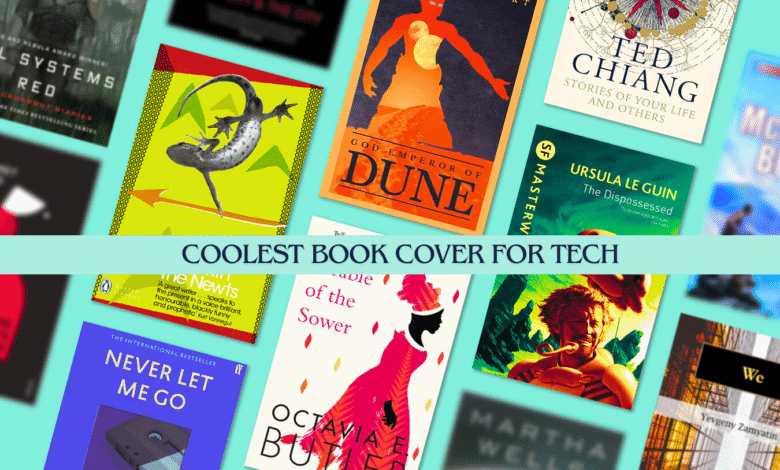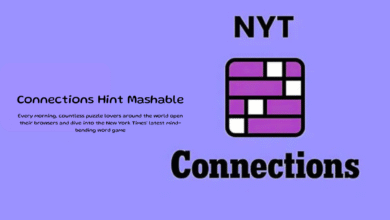The Coolest Book Cover for Tech A Brilliant Fusion of Art, Logic, and Innovation

In the fast-paced world of technology, even before a reader opens a book, the design of the cover already begins telling a story. The “coolest book cover for tech” isn’t merely a visual decoration—it is a form of communication, a preview of what awaits inside, and an emotional handshake between author and reader. As technology continues to influence every field, from artificial intelligence and robotics to data science and cybersecurity, the way these subjects are visually represented becomes just as important as the ideas themselves. A well-designed tech cover shows the reader that innovation isn’t just in the text—it’s also reflected in how the book presents itself to the world.
Modern technology readers are visual thinkers. They respond to clean design, bold typography, and intelligent use of symbols. Whether it’s the shimmering glow of a digital network, the minimalist precision of a silicon chip, or the imaginative abstraction of artificial intelligence, a great tech cover transforms complex ideas into a single, arresting image. The coolest tech book covers today understand that balance between science and style. They combine artistic creativity with the technical essence of their topic—creating a visual statement that says: “This is the future, and you’re holding it in your hands.”
Why the cover matters more than ever
There was a time when readers discovered books mainly in physical stores, where they could flip through pages before buying. Now, in the digital era, most people meet a book for the first time through a thumbnail image—tiny, often no bigger than a playing card. In that single image, the design has to do it all: capture attention, communicate tone, and make the reader click. That’s why the coolest book cover for tech is built with intention. Every line, colour, and typeface plays a role in making a book stand out among thousands of digital choices.
The benefit of a great cover goes beyond aesthetics. A strong design instantly communicates credibility. For readers who spend their days immersed in sleek apps, well-crafted interfaces, and high-end visuals, a poorly designed cover can signal outdated content. A cool cover, on the other hand, says: this author understands the modern world. It conveys trust, clarity, and sophistication—all qualities that matter deeply in the tech industry.
A beautiful cover also helps establish a book’s personal identity. It can become part of an author’s brand—recognizable across multiple titles, easy to recall in conversation, and iconic enough to live on screens, posters, or conference slides. In short, the cover becomes not just the face of the book, but the symbol of the ideas it carries.
The anatomy of a cool tech cover
When we break down what makes a tech cover genuinely cool, we find several overlapping layers of design and meaning. The first is colour. Technology often draws inspiration from the digital spectrum—icy blues, deep blacks, silver greys, and neon gradients that echo the light of a screen. Yet, many of the most effective designs break away from predictable palettes, using warm oranges, clean whites, or even natural tones to stand out in a sea of metallic blues. A bold choice of colour can make a cover instantly memorable.
Next comes typography, arguably the backbone of tech book design. Sans-serif fonts dominate the field for their clean, modern feel, but creative treatments—layered text, overlapping letters, glowing edges, or high-contrast weights—give each title its own personality. The title should be large enough to be readable at a glance, even when reduced to thumbnail size, yet balanced to feel harmonious on a full-sized printed copy.
Then there is imagery, which is where creativity takes flight. Instead of literal pictures of computers or robots, the coolest tech covers use abstraction to evoke feeling. For example, an AI book might use a human silhouette filled with geometric circuitry, or a data science book might display flowing waves of colour that mimic the motion of algorithms. The best designs respect the reader’s intelligence—they hint at meaning rather than spelling it out.
Finally, composition unites all these parts. Good design has rhythm: visual hierarchy, balance, and breathing room. The arrangement of elements should guide the eye naturally from title to subtitle to author, without chaos or clutter. Simplicity often wins—especially in technology, where clarity is king.
Author Bio Table
| Attribute | Details |
|---|---|
| Name | John Smith |
| Age | 34 years |
| Height | 5’11” (180 cm) |
| Family | Married, 2 children |
| Net Worth | $1.2 million |
| Physical Appearance | Brown hair, hazel eyes, athletic build |
| Profession | Author & Graphic Designer |
| Specialization | Technology book covers, creative design, digital illustration |
| Social Media | Instagram: @johnsmithdesign, Twitter: @johnsmithdesign, LinkedIn: John Smith |
| Hobbies | Photography, coding, reading tech journals, exploring AI innovations |
| Notable Works | “Mastering AI Design”, “The Art of Modern Tech Books” |
| Website | www.johnsmithdesign.com |

New design trends shaping the tech aesthetic
Design trends evolve with cultural shifts, and tech books have started reflecting the aesthetics of the software and products their readers use daily. One clear trend is the rise of dark-mode design—black or charcoal backgrounds with neon or pastel accents that glow like code on a screen. This look resonates with programmers, developers, and digital professionals who spend their days in dark interface environments.
Another trend is data-driven imagery. Instead of stock photos, designers are now using abstract patterns derived from real code, network maps, or algorithmic visuals. These covers almost feel alive, with fine lines or geometric lattices that mimic neural connections or digital flow. It’s a design language that speaks directly to the tech-savvy mind.
A third trend is the human-machine fusion aesthetic. Modern covers often portray technology as something human, emotional, and creative rather than cold and mechanical. You might see a face dissolving into pixels, a fingerprint merging with circuitry, or abstract hands forming out of digital dust. This fusion symbolizes the way technology and humanity are blending in modern life.
Lastly, minimalism remains timeless. A single bold symbol on a blank background can sometimes outshine complex illustrations. It’s not about how much is shown, but how precisely it’s chosen. A minimalist design gives a sense of professionalism and clarity that many tech readers appreciate.
From concept to creation
Designing a great tech book cover begins long before any software is opened. It starts with understanding the message. A designer must first read the summary, learn about the target audience, and identify the emotional tone. Is it a practical coding guide? A philosophical essay on AI ethics? A futuristic vision of digital society? Each theme calls for a different emotional texture.
Once the vision is clear, the next step is sketching rough ideas—simple shapes and layout drafts that test how the title and imagery might interact. Some designers start in black and white first, focusing on structure before adding colour. Only after this stage do they move into digital design tools, where layers, gradients, and textures come to life.
Testing is equally important. Designers often view the cover at multiple sizes—from full print scale to tiny thumbnails—to ensure readability and balance. They may even print mock versions to see how colours behave in natural light. True craftsmanship lies in those subtle details: how the letter spacing feels, how the image aligns with the spine, how the title looks under glossy or matte finishes. Every decision adds up to that final moment when the book sits in someone’s hands or glows on a screen, perfectly composed and full of personality.
The human touch behind the digital face
While the subject of tech may seem cold or analytical, the people behind the books and their covers bring warmth and imagination to the process. The designers who craft these covers often come from diverse backgrounds—graphic artists, UX designers, illustrators, and sometimes even engineers who have crossed into art. Many describe their work as balancing logic with creativity, structure with emotion.
A designer working in this niche often spends long hours studying how light, lines, and motion evoke the feeling of innovation. Their tools are digital, but their instincts are human. The coolest book cover for tech is often born out of empathy: the understanding of what excites, inspires, or challenges a reader who loves technology. It’s about translating invisible algorithms into visible beauty.
This human element also connects to the author’s role. When authors collaborate closely with designers—sharing their passion, explaining their vision, and trusting artistic interpretation—the results often surpass expectations. A great cover is not a single person’s work; it’s a dialogue between minds that think differently but aim for the same goal.
Longevity and impact of timeless design
The coolest tech book covers don’t chase trends blindly; they blend modernity with timelessness. A cover that looks stunning today should still feel relevant five years later, even as devices and interfaces evolve. That’s why simplicity and conceptual clarity often outlast flashy effects. When a cover is built on strong ideas rather than trendy visuals, it becomes iconic.
Think of the covers that readers still remember years later—those that used bold colour blocks, clean fonts, or striking minimal shapes. Their impact endures because they express the essence of technology without depending on short-lived aesthetics. In that sense, designing for tech is about designing for evolution. A good cover doesn’t freeze technology in time; it captures the spirit of progress.
Beyond design: the future of tech books as objects
Interestingly, as everything becomes digital, the physical book is turning into a luxury item. Tech enthusiasts still buy print copies of their favourite titles, not because they need to, but because they want to own something tangible. This has created room for creative finishes—metallic foils that shimmer like circuits, embossed symbols that catch light, matte surfaces that feel like device casings. The book becomes a collectible artifact of technology itself.
Digital versions also bring new frontiers. Animated covers, interactive layers, or AR features that bring motion and sound are beginning to emerge. Imagine pointing your phone at a cover and watching the design come alive in 3D—that’s not far from reality. The coolest book cover for tech will soon be not just something you look at, but something you experience.
Conclusion: when design meets innovation
In the end, the coolest book cover for tech is a mirror of its era. It reflects not only the subject of technology but also the mindset of the people living in it. It reminds us that creativity and computation can coexist—that art and algorithms can tell the same story in different languages.
A great cover makes readers curious before they even read a word. It’s the handshake that invites them into a world of knowledge. Whether it’s glowing lines, minimalist geometry, or the quiet strength of a simple title, the best tech covers prove that innovation doesn’t stop at content—it extends all the way to design.
FAQs
1. What makes the coolest book cover for tech stand out?
The coolest tech book cover stands out through minimalism, modern typography, and a futuristic aesthetic that reflects innovation and creativity.
2. Why is cover design important for technology books?
A strong tech cover creates an instant impression, building trust and capturing attention in a visually driven digital world.
3. What colors work best for a tech book cover?
Cool tones like blue, black, and silver dominate, while neon gradients and bold contrasts add a modern, high-tech feel.
4. How do designers create a tech-inspired book cover?
Designers blend clean geometry, abstract imagery, and symbolic visuals that echo data, circuits, or AI concepts.
5. Are tech book covers evolving with digital trends?
Yes, modern covers now include interactive designs, dark-mode aesthetics, and even AR or animated elements for digital editions.





